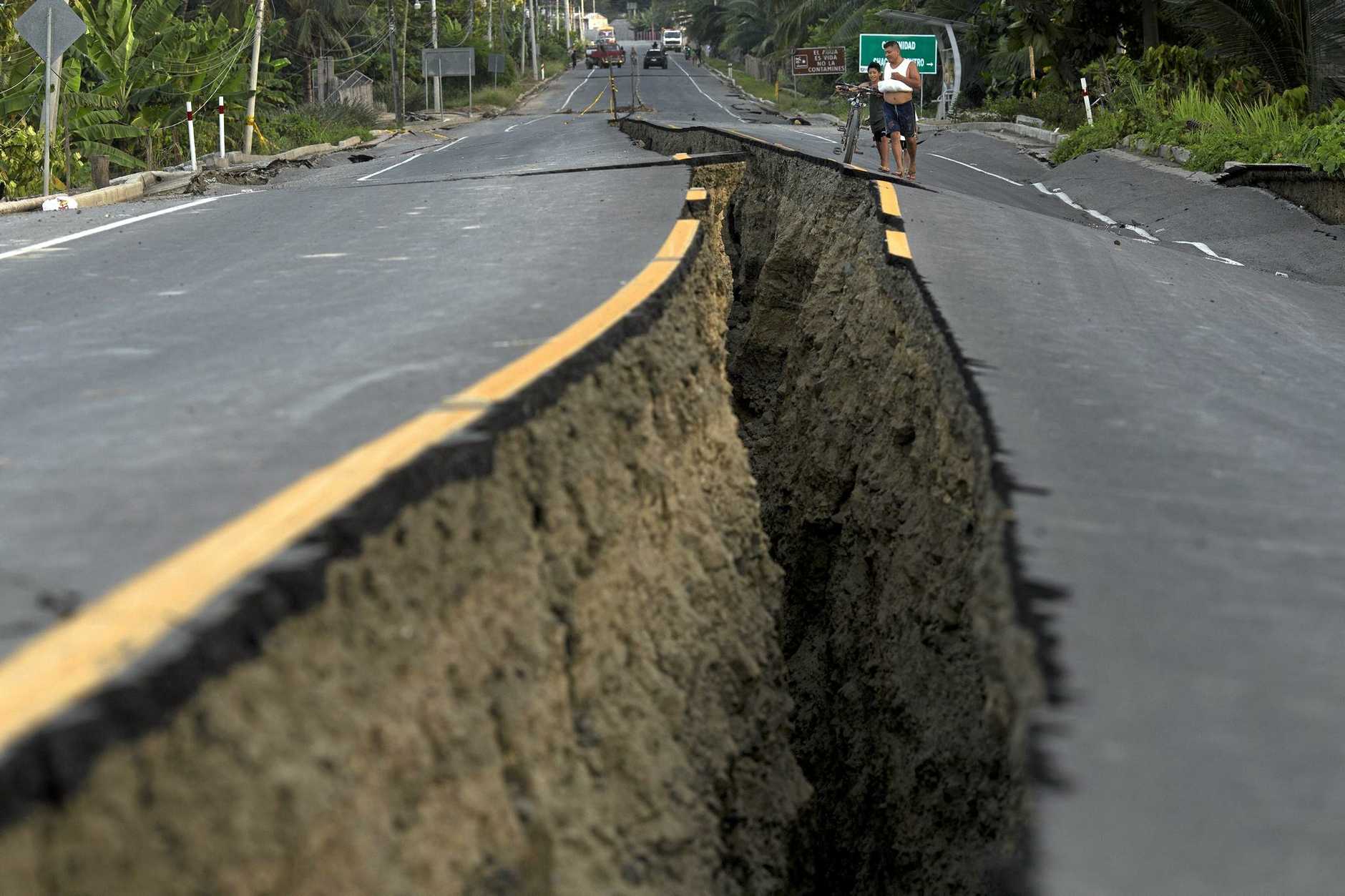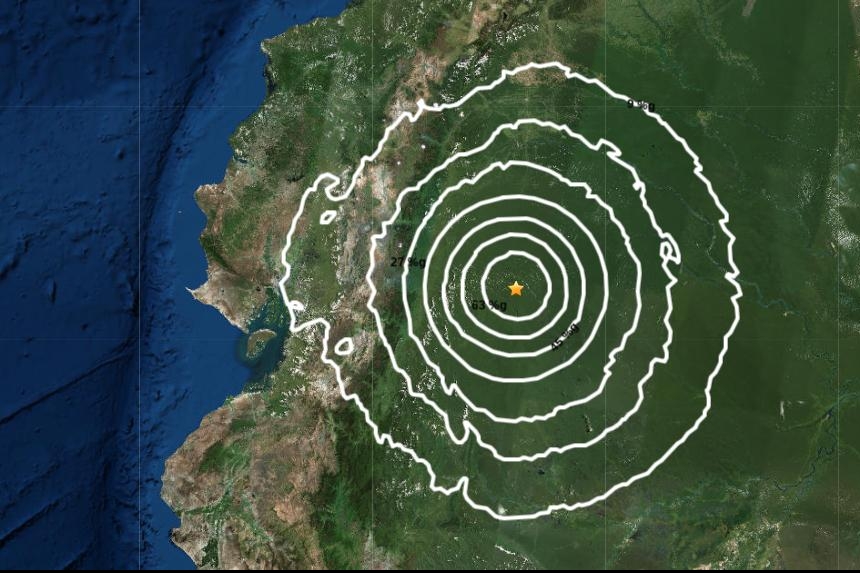Earthquakes are devastating. Every alternate day one comes across news channels flashing news of an earthquake of some magnitude occurring somewhere in the world. Those who are exposed to the debris of buildings with piled-up dead bodies – even in photos – are terror struck and end up losing their sleep and peace of mind.
A good question to ask here is that – Are all earthquakes serious? Should one suffer from this terrible fear psychosis? Will you and your beloved ones die and be actually buried beneath the debris of your dream house itself? Well not necessarily. Let us understand WHY of it.
What is an Earthquake?

Earthquakes occur due to sudden release of tremendous amounts of energy within the earth by a sudden movement at a point called the hypocenter. (The point on the surface of the earth directly above the hypocenter is called the epicenter.) The resulting shock sends out longitudinal, vertical, and transverse vibrations in all directions, both through the earth’s crust and along the surface, and at different velocities. Therefore, the shock waves arrive at distant points at different times. There are some scales to measure these waves and energy. The release of energy is responsible for damages to buildings. Hence in order to measure an earthquake, this release of energy is measured. Let us understand how they are measured. They are measured as, Magnitude and Intensity of the earthquake.
What is Magnitude of an Earthquake?

According to ‘Indian Standard – IS 1893 (Part 1) 2002’, the magnitude of earthquake is a number, which is a measure of energy released in an earthquake. It is defined as logarithm to the base 10 of the maximum trace amplitude, expressed in microns. This release of energy beneath the crust of earth is measured on “Richter’s scale” which measures earthquake’s magnitude expressed and measured “as from 2.00 to 8.00 or higher”.
According to ‘National Earthquake Information Center, U.S. Geology survey’, several million earthquakes occur in the world each year. Many go under-detected because they hit remote areas or have very small magnitudes.
The table below gives the idea of occurrences of earthquakes of different magnitudes.
(Source: National Earthquake Centre, US Geological Survey – Based on Observations since 1900).

The earthquake can be proved devastating, but if you take proper precautions, then you can indeed protect your loved ones and yourself. And as usual, Gharpedia is again here to help you with the solution on how to protect yourself during and after an earthquake.
What is Intensity of Earthquake?
According to ‘Indian Standard – IS 1893 (Part 1) 2002’, the intensity of an earthquake at a place is a measure of the strength of shaking during the earthquake, and is designated by a number according to the Modified Mercalli Scale or M.S.K. Scale of seismic intensities. Medvedev SponheuerKarnik(MSK) Scale ranges from I to XII in Roman Capital Numerical. In this grade scale “I” represent least perceptive and grade scale “ XII ” represents most severe. From this it can be said that Intensity is a qualitative form of measurement.

According to ‘Frederick S. Merritt’ (Author of Building Design and Construction Handbook) The Modified Mercalli scale compares earthquake intensity by assigning values to human perceptions of the severity of oscillations and extent of damage to buildings. The scale has 12 divisions. The severer the damage, the higher is the number assigned to the earthquake intensity.

Now let us understand the difference between magnitude and intensity of earthquake.
Difference between Magnitude and Intensity of Earthquake
| Characteristics | Magnitude of Earthquake | Intensity of Earthquake |
| Definition | The magnitude of earthquake is the measure of amount of strain energy released by the fault rupture. | The intensity of earthquake at a place is a measure of the strength of shaking during the earthquake. |
| How it Measured | It is measured in Richter Scale. | It is measured mainly on two scales mainly Modified Mercalli Intensity (MMI) Scale and Medvedev SponheuerKarnik (MSK) Scale. |
| Measurement Based on | Maximum Movement or displacement of the fault. Magnitude is the size of earthquake at the source. For its calculations, the maximum displacement is taken into consideration. The numerical value of the magnitude that is the size of earthquake remains constant. | Extent and Type of Damage. For calculating intensity of the earthquake, the responses of people in affected areas, damage to the structures and changes in natural surroundings are observed. Areas near to the epicenter may extremely feel the shaking intensity and are affected critically as compared to area which are far. |
| Objectivity | More objective of a measure of the energy of an earthquake | More subjective of a measure of the destructive power of an earthquake and its effect. |
| Earliest Scale | Magnitude is measured in Richter Scale since 1934 which Charles F. Richter invented in 1934. | The Rossi-Forel (RF) scale was the earliest scale invented to measure the intensity of earthquakes. It was developed in the 19th century and had levels ranging from I to X, with corresponding levels of damage that would be noticed at each of these levels. |
| Scale of Measurement | It is measured as logarithm to the base 10 of the maximum trace amplitude and it could even be zero or even negative. | It is measured on a scale range of I to XII in Roman Capital Numerical. |
| Effect of Distance from Epicenter | The magnitude of earthquake is a single value for a particular earthquake. The magnitude does not depend on where the measurement is made. | The intensity of a particular earthquake is different for different locations. This value changes from location to location. It may change with distance from the epicenter of the earthquake. It is often greatest closest to the epicenter. |
| Form of Measurement | It is a quantitative form of measurement. | It is a qualitative form of measurement. |
To sum up, magnitude and intensity both are calculated when an earthquake occurs. Magnitude is a measurement of the earthquake’s size calculated from the displacement of fault waves while intensity is a measurement of shaking of the ground and measured by levels of observable destruction to man-made as well as natural objects. Magnitude and intensity both provide information about the earthquakes, which is very useful to calculate their probability in times to come. But both calculation concepts follow different methods and are recorded on different scales.
In brief magnitude is measured at one place only and is same. It is a measure of release of energy. While intensity is the description of damages which will be naturally more at epicenter and will go on reducing as you go away from epicenter. Thus, it keeps on changing at places and is not constant like magnitude even for the same earthquake.
Probability of You Getting Hurt During Earthquake
Now do you want to understand, what is the probability of you facing such killer earthquakes? For understanding it we have to have a look at the frequency of earthquakes, which keeps on occurring across the earth.
If you look at the table showing frequency of earthquake, one should not get worried, at least by the everyday “news flashes”, by the ill-informed newsreader or the newspaper reports. If you want to understand in detail: Read: “Are All Earthquakes Killer”
For example the table clearly explains that earthquakes of magnitude 2 to 2.9 occur every 2 minutes on earth i.e. 720 such earthquakes occur on the earth every day. Most of them get unnoticed or remain unreported or are of academic importance only. But it is the newsreaders who frighten you. And ironically earthquakes of such magnitude are not felt even by these newsreaders! They get recorded only on seismographs. To understand more Read “Are All Earthquakes Killer”
Summing up, although there are some earthquakes which lead to loss of assets and fatalities too; yet not all earthquakes fall under this category. So simply getting paranoid – by viewing hyperbole, ill-informed news alerts, reading ill-informed newspapers– is absolutely not required!
However be vigilant; prior to purchasing or building your dream house and ensure that it adheres to earthquake resiliency standards and norms; focus on your work; live peacefully; conduct earthquake drills once in a while with your team and family; enjoy life and leave the rest to God.
We hope now your confusion of these two terms is clear now by reading this difference between magnitude and intensity of earthquake.
Must Read:
Seismic Zones of India: All you Need to Know
Buildings Collapse During Earthquake due to Unsymmetrical Architectural Configuration




